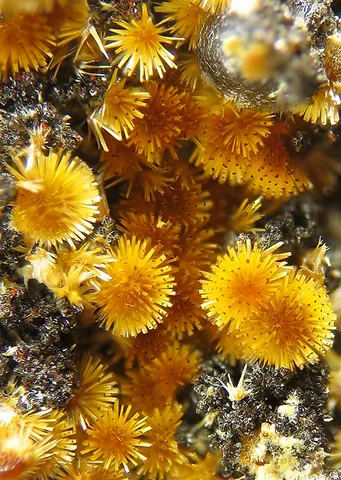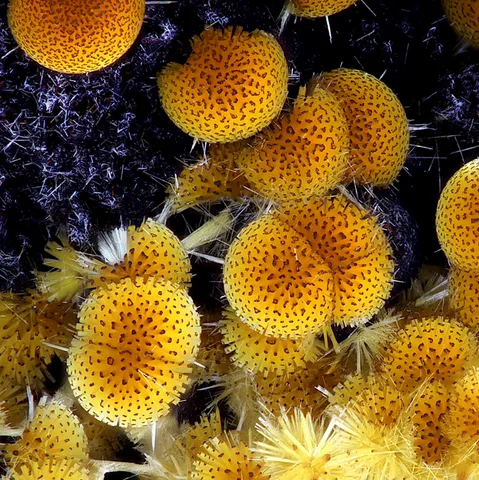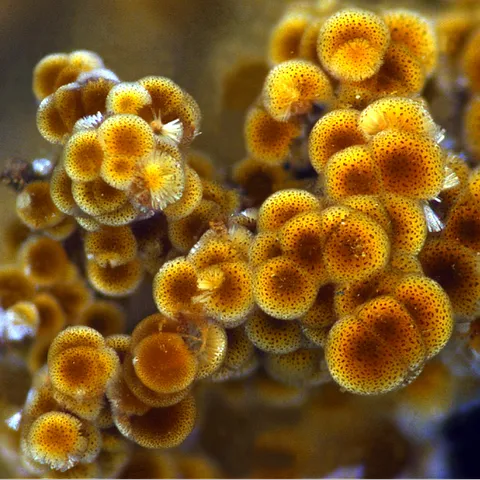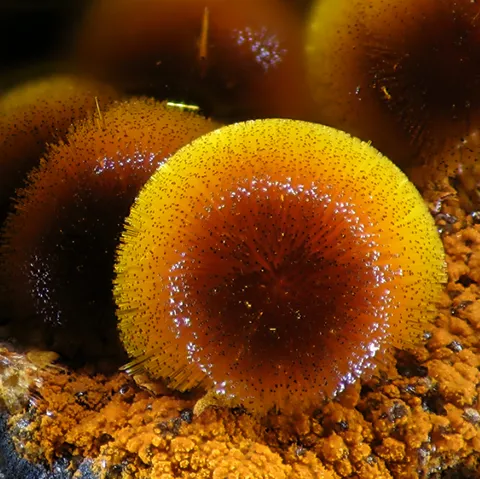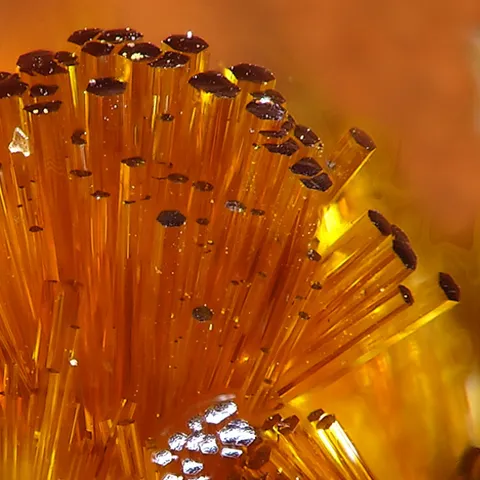CACOXENITE
Class : Phosphates, arsenates, vanadates
Subclass : Hydrated phosphates
Crystal system : Hexagonal
Chemistry : Fe24AlO6(PO4)17(OH)12 75H2O
Rarity : Quite common
Cacoxenite is a hydrated iron and aluminum phosphate. It is a secondary mineral that associates with other secondary phosphates and limonite in the surface oxidation zone of many iron deposits. It is present, but more discreet, always as a secondary mineral, in phosphate pegmatites. Its name comes from the Greek kakos (bad) and xenos (foreign), due to the phosphorus contained in this mineral which alters the quality of the silty iron ore which contains it. Its crystals are usually tiny, acicular, and cocoxenite presents itself in the very typical habit of radiated or concentric spherolites not exceeding 8 mm ; it appears more rarely in disordered sheaves of fibrous crystals. Its color is reddish orange, yellow to yellow-brown, sometimes brown.
Main photo : Cacoxenite from La Fumade, Tarn, France © Jean-Marc Johannet
Cacoxenite in the World
Twinning
No twin known for this mineral species.
Fakes and treatments
No fake identified for this mineral species.
Hardness : 3 to 4
Density : 2.2 to 2.6
Fracture : Irregular
Streak : White
TP : Translucent
RI : 1.575 to 1.656
Birefringence : 0.060
Optical character : Uniaxial +
Pleochroism : Visible
Fluorescence : None
Solubility : Acids
Magnetism : None
Radioactivity : None

